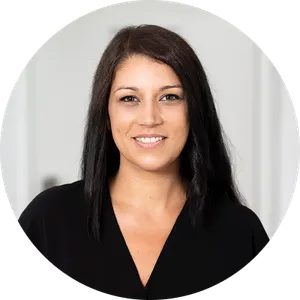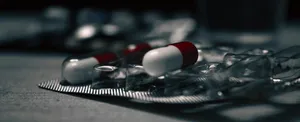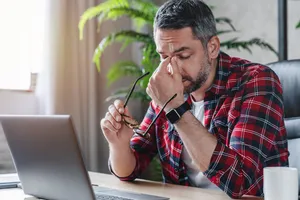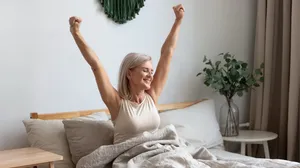Sleep tracker for sleep analysis: What they offer and how you can analyze your sleep phases like in a sleep lab.
Theresa Hauser, MSc. | 17.09.2023
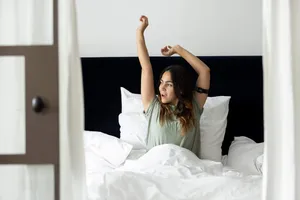
There are now many sleep trackers and ways to measure sleep quality within your own four walls. But how meaningful are the results? How you can analyze your sleep phases like in a sleep lab.
From Smartwatch to Ring: What Sleep Trackers Measure
A watch, an app, a ring, or other devices: The market for sleep measurement is booming, and more and more people want to improve their nightly recovery. The market research company Magna assumes that the sleep tech market in Germany, Austria, and Switzerland will grow by 15 percent by 2028. But how do all these devices work, and how can they specifically help to improve sleep in the long term?
Fitness trackers on the wrist measure steps, provide tips on training intensity, and many also claim to "measure" our sleep. In the morning, we can then read when we went to bed and got up, and how much time we spent in a particular sleep phase. It must be said that we could do this if these measurements had sufficient accuracy. However, apart from the bed and wake-up times, the trackers are usually quite inaccurate, and often the results seem rather random compared to measurements in a sleep laboratory. [1, 2].
The fundamental problem is that the criteria for measuring and describing sleep are largely based on measurements of brain activity, as they take place in a clinical sleep laboratory – and that simply doesn't work with a device on the wrist. Fitness trackers therefore try to draw conclusions about sleep from measuring physical activity, as movements are naturally significantly reduced while we sleep, and in Rapid Eye Movement (REM) sleep, we are even paralyzed. Unfortunately, this only works with limitations. So be careful with data that may be inaccurate. You might believe in the evidence of the results and could draw false conclusions from them.
Recording Sleep Phases Like Deep Sleep: How It Works
It works better when devices also include other body measurements such as heart rate or derived measures. [3, 4] Such devices work on the same principle: A device measures the heart rate, and an artificial intelligence (AI), previously trained accordingly to recognize sleep phases based on heart data, analyzes the data. The better the sensor and the algorithm that evaluates the data, the more precise the results.
An example is sleep² – an app trained with data from thousands of patients from real sleep labs in Salzburg, achieving the highest precision to date. This also withstands scrutiny. The algorithm was published in a peer-reviewed article by independent reviewers. [5] By observing how the heart behaves in REM sleep, the program learned to recognize sleep stages solely based on the heartbeat.
sleep², a spin-off of the University of Salzburg, cooperates with the experienced sensor manufacturer Polar. The latest sensor model, called Verity Sense, is worn on the upper arm and is hardly noticeable at night. You only need to wear the sensor at night and pair it with the app before going to sleep. The sensor measures the heartbeat, and the app evaluates the data. The result shows the sleep phases (deep sleep, light sleep, REM phase or dream sleep, wake phase), the time to fall asleep, the nocturnal wake time, and evaluates sleep efficiency and sleep quality. Although this still doesn't measure the brain, it comes very close to the results from a sleep lab.
- REM Sleep: A sleep phase characterized by rapid horizontal eye movements (English: "Rapid Eye Movement", REM), i.e., from left to right. At the same time, the skeletal muscles relax, and we are virtually paralyzed. Brainwave activity (EEG) is similar to the waking state. The most vivid dreams also occur in this sleep phase. REM sleep accounts for 20 to 25 percent of an adult's night's sleep, with the proportion increasing in the second half of the night.
Sleep Analysis is One Thing. But What to Do with the Results?
Well, some may now ask. But what to do with the results? In real sleep labs, the measurement, if you even get an appointment, takes place in just one night. The significance is therefore also limited. Mobile devices offer an advantage here: Sleep analysis can be performed as often as desired in as many nights as needed, thus also mapping the change in sleep. sleep² also offers tips and sleep training to improve sleep in the long term. With other offers, users now sit in front of results and wonder what to do.
How you slept can actually be quite well said from the gut without sleep tracking, right? That's absolutely correct, and in case of doubt, the feeling is also more important than the objective measurement. Nevertheless, the latter can also provide valuable information. For example, it can inform us whether we actually fall asleep faster, wake up less often, or achieve higher sleep efficiency overall. Sometimes it is also reassuring to know that we actually slept more than it felt.
- Sleep Efficiency: Sleep efficiency shows how "efficiently" you used your time in bed. Sleep efficiency always refers to a percentage and is determined from two values: The time you actually slept and the time you spent in bed. For example, if you sleep only 6 hours out of 8 hours in bed, your sleep efficiency is 6/8 = 75 percent. A good sleep efficiency is generally considered to be at least 80-85 percent.
When It Comes to Sleep, Listen to Your Own Feelings
On the other hand, the device can also cause stress, suspects sleep researcher and sleep² advisor Dr. Christine Blume. For example, if the tracking device indicates that sleep was poor and you can't concentrate well the next day. Then it could be like a self-fulfilling prophecy, suspects Blume. In any case, you should not forget to listen to your own feelings with all measurements, she recommends. "This is really important when it comes to sleep." The subjective feeling and sleep measurement often do not match. "In the case of falling asleep and staying asleep disorders, it is even a symptom that you underestimate your own sleep."
In therapy, the main focus is then on perceiving sleep as restful. For those affected, it is very important to feel comfortable with their own sleep. An objective measurement doesn't always change that.
How to Optimize Sleep? Your Own Sleep Behavior is Key.
Measurement alone certainly doesn't bring sleep improvement or restful sleep. Interpretation and learning from the data, as well as appropriate adjustments in everyday life, such as healthy nutrition and adequate exercise, play a role.
"If there is a problem, it is crucial to change your behavior and, for example, work on sleep hygiene before going to bed to improve sleep in the long term," says sleep² founder and sleep researcher Prof. Manuel Schabus of the University of Salzburg. Good relaxation before falling asleep is particularly important.
sleep²-Tips:
- Sleep measurements by fitness trackers are not very accurate unless they also include body measurements such as heart rate.
- The feeling is important and, in case of doubt, more important than an objective measurement.
- However, objective measurement can also provide important information that can then be compared with the feeling.
Test sleep² now and learn to sleep better!
To the sleep² appREM Sleep
REM sleep (short for Rapid Eye Movement) is a sleep phase characterized by rapid horizontal eye movements from left to right. During this phase, the skeletal muscles relax completely, temporarily paralyzing the body. At the same time, brain activity (EEG) resembles that in the waking state. The most vivid dreams also occur during REM sleep. In adults, REM sleep accounts for about 20 to 25 percent of the total nightly sleep, with its share increasing in the second half of the night.
Sleep Efficiency
Sleep efficiency indicates how "efficiently" you use your time in bed. It is always given as a percentage and is calculated based on the time you actually slept compared to the time you spent in bed.
Example: If you spend 8 hours in bed but only sleep for 6 hours, your sleep efficiency is 6/8 = 75%.
Good sleep efficiency is usually around 80–85% or higher.
Sources:
- Ameen, M. S., Cheung, L. M., Hauser, T., Hahn, M. A., & Schabus, M. (2019). About the accuracy and problems of consumer devices in the assessment of sleep. Sensors, 19(19), 4160. doi: 10.3390/s19194160
- Chinoy, E. D., Cuellar, J. A., Huwa, K. E., Jameson, J. T., Watson, C. H., Bessman, S. C., Hirsch, D. A., Cooper, A. D., Drummond, S. P. A., & Markwald, R. R. (2020). Performance of seven consumer sleep-tracking devices compared with polysomnography. Sleep, 44(5). doi:10.1093/sleep/zsaa291
- Sridhar, N., Shoeb, A., Stephens, P., Kharbouch, A., Shimol, D. B., Burkart, J., Ghoreyshi, A., & Myers, L. (2020). Deep learning for automated sleep staging using instantaneous heart rate. npj Digital Medicine, 3(1), 106. doi:10.1038/s41746-020-0291-x
- de Zambotti, M., Cellini, N., Goldstone, A., Colrain, I. M., & Baker, F. C. (2019). Wearable Sleep Technology in Clinical and Research Settings. Medicine and science in sports and exercise, 51(7), 1538-1557. doi:10.1249/MSS.0000000000001947
- Topalidis, P., Heib, D. P., Baron, S., Eigl, E. S., Hinterberger, A., & Schabus, M. (2023). The Virtual Sleep Lab—A Novel Method for Accurate Four-Class Sleep Staging Using Heart-Rate Variability from Low-Cost Wearables. Sensors, 23(5), 2390.

